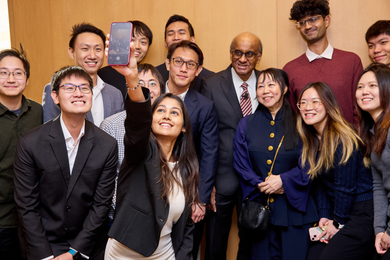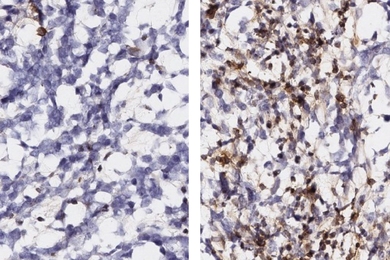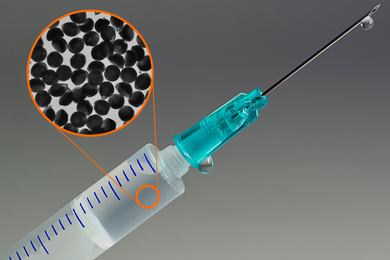On August 7, 2016, the New York Times Magazine published “The Brain That Couldn’t Remember,” an article adapted from the forthcoming book “Patient H.M.: A Story of Memory, Madness, and Family Secrets,” by Luke Dittrich. The article is highly critical of the late Suzanne Corkin, who was a professor emerita of neuroscience until her death on May 24.
In response to the article, more than 200 members of the international scientific community — most from outside MIT — have signed a letter in support of Corkin and her research with the amnesic patient Henry Molaison.
What follows is a statement by James DiCarlo, the Peter de Florez Professor of Neuroscience and head of the Department of Brain and Cognitive Science.
In “The Brain That Couldn’t Remember,” three allegations are made against Professor Suzanne Corkin, who died on May 24. Professors John Gabrieli and Nancy Kanwisher at MIT have examined evidence in relation to each allegation, and, as detailed below, have found significant evidence that contradicts each allegation. In our judgment, the evidence below rebuts each claim.
1. Allegation that research records were or would be destroyed or shredded.
We believe that no records were destroyed and, to the contrary, that Professor Corkin worked in her final days to organize and preserve all records. Even as her health failed (she had advanced cancer and was receiving chemotherapy), she instructed her assistant to continue to organize, label, and maintain all records related to Henry Molaison. The records currently remain within our department.
Assuming that the interview is accurately and fully reported by Mr. Dittrich, we cannot explain why Professor Corkin made the comments reported in the article. This may have been related to tensions between the author and Professor Corkin because she had turned down his request to examine Mr. Molaison’s confidential medical and research records.
Regardless, the critical point is not what was said in an interview, but rather what actions were actually taken by Professor Corkin. The actions were to preserve the records.
2. Allegation that the finding of an additional lesion in left orbitofrontal cortex was suppressed.
The public record is clear that Professor Corkin communicated this discovery of an additional lesion in Mr. Molaison to both scientific and public audiences. This factual evidence is contradictory to any allegation of the suppression of a finding.
The original scientific report (Nature Communications, 2014) of the post-mortem examination of Mr. Molaison’s brain included this information in the most prominent and widely read portion of the report, the abstract.
In addition, Professor Corkin herself disseminated this information in public forums, including a 2014 interview, posted on MIT News and subsequently elsewhere online, in which she said: “We discovered a new lesion in the lateral orbital gyrus of the left frontal lobe. This damage was also visible in the postmortem MRI scans. The etiology of this lesion is presently unknown; future histological studies will clarify the cause and timeframe of this damage. Currently, it is unclear whether this lesion had any consequence for H.M.’s behavior.”
3. Allegation that there was something inappropriate in the selection of Tom Mooney as Mr. Molaison’s guardian.
In her book “Permanent Present Tense” (2013), Professor Corkin describes precisely the provenance of Mr. Molaison’s guardianship (page 201).
Briefly, in 1974 Mr. Molaison and his mother (who was in failing health; his father was deceased) moved in with Lillian Herrick, whose first husband was related to Mr. Molaison’s mother. Mrs. Herrick is described as caring for Mr. Molaison until 1980, when she was diagnosed with advanced cancer, and Mr. Molaison was admitted to a nursing home founded by her brother.
In 1991, the Probate Court in Windsor Locks, Connecticut, appointed Mrs. Herrick’s son, Tom Mooney, as Mr. Molaison’s conservator. (Mr. Mooney is referred to as “Mr. M” in the book because of his desire for privacy.) This family took an active interest in helping Mr. Molaison and his mother, and was able to help place him in the nursing home that took care of him.
Mr. Dittrich provides no evidence that anything untoward occurred, and we are not aware of anything untoward in this process. Mr. Dittrich identifies some individuals who were genetically closer to Mr. Molaison than Mrs. Herrick or her son, but it is our understanding that this family took in Mr. Molaison and his mother, and took care of Mr. Molaison for many years. Mr. Mooney was appointed conservator by the local court after a valid legal process, which included providing notice of a hearing and appointment of counsel to Mr. Molaison.
Journalists are absolutely correct to hold scientists to very high standards. I — and over 200 scientists who have signed a letter to the editor in support of Professor Corkin — believe she more than achieved those high standards. However, the author (and, implicitly, the Times) has failed to do so.
James J. DiCarlo MD, PhD
Peter de Florez Professor of Neuroscience
Head, Department of Brain and Cognitive Sciences
Investigator, McGovern Institute for Brain Research
Massachusetts Institute of Technology










